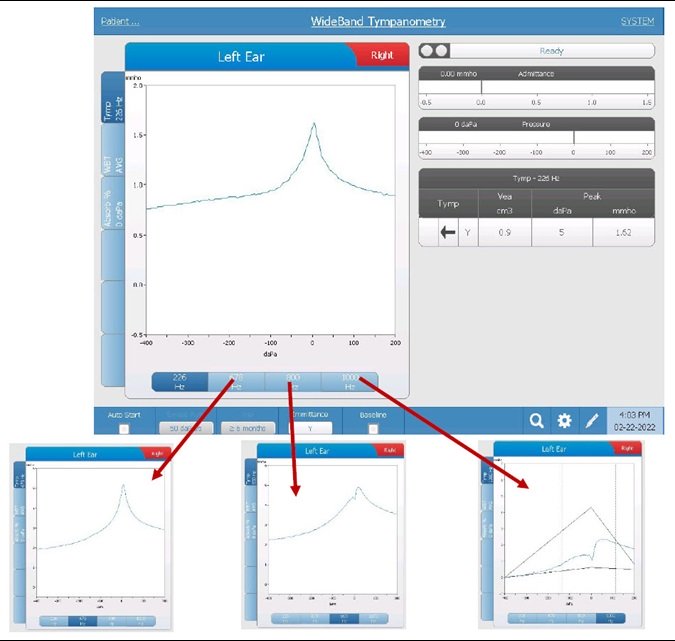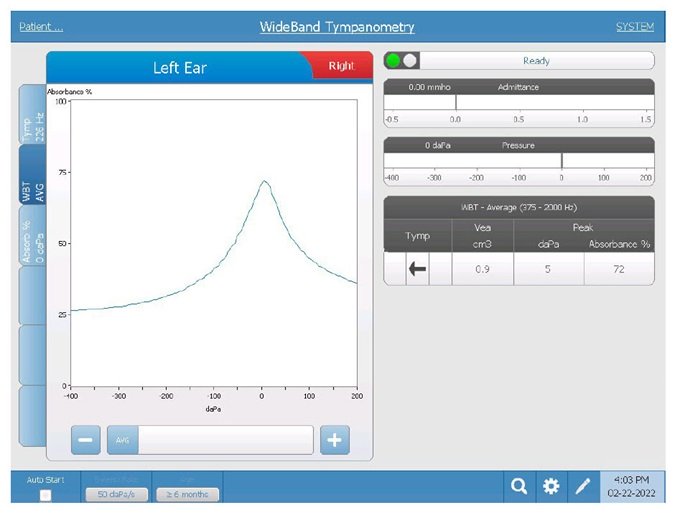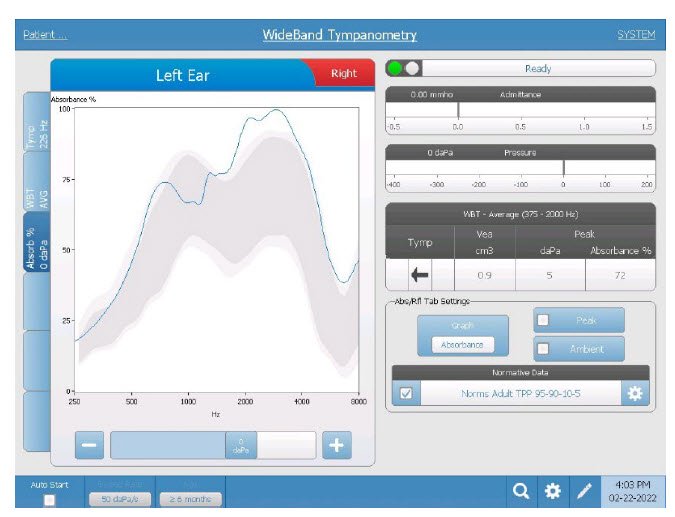GSI has added WideBand Tympanometry to the TympStar Pro™. One question that we get at GSI is: why should we add WideBand to our middle ear testing routine? The answer is simple: data, data, data! To fully understand how much of a clinical impact the addition of WideBand Tympanometry has on a clinic, it’s important to first review what is currently happening with middle ear testing. GSI has done a couple of webinars on WideBand Tympaonmetry – check them out here:
https://www.audiologyonline.com/audiology-ceus/course/what-s-hype-wideband-37356
It is important to note that WideBand Tympanometry is available on the latest version of the TympStar Pro with the advanced clinical license. To determine your version of TympStar Pro, press the configure button on the front panel of the instrument. If you have v1.x.x, it is not possible to update to WideBand Tympanometry. If you have v2.x.x and WideBand is not loaded on the device, it is possible to add WideBand Tympanometry with the advanced clinical license.
What is WideBand Tympanometry?
WideBand Tympanometry assesses the middle ear function with a WideBand click stimulus in order to capture the middle ear behavior at a wide range of frequencies. The click stimulus contains frequencies from 226 to 8000 Hz. WideBand Tympanometry calculates and displays the following measurements: traditional tympanograms, WideBand Averaged Tympanogram and a graph of middle ear absorbance. Absorbance is the amount of acoustic energy transmitted or absorbed by the middle ear expressed as a percentage across the frequencies of the wideband stimulus.
Performing WideBand Tympanometry on the TympStar Pro
• Select WideBand Tympanometry Test Type
• Place probe in ear
• Ensure you obtain a good seal and press ‘Start’
It is the same procedure for obtaining a Tympanogram with a single frequency like 226 Hz.
What to do with all that data?
The first tab displays single frequency tympanograms at 4 common probe tones (226, 678, 800, and 1000 Hz). This will give you a chance to review something that is familiar and comfortable.

The second tab is a WideBand Tympanometry Averaged Tympanogram. The WideBand Averaged Tympanogram looks like a traditional tympanogram, but is the average of a range of frequencies (in Adults, 375-2000 Hz; <6 months, 800-2000 Hz). Results are expressed as an Absorbance Percentage rather than Admittance (mmho). Admittance shows how easy sounds travels through the system and Absorbance shows how much of the acoustic energy is absorbed by the system.

The third tab is the Absorbance Graph. This graph shows the absorbance at TPP or ambient pressure as a function of frequency. The TympStar Pro includes normative data for adults and children. The shaded area below is the Norms for 10% - 90% or 5% - 95% combined of the normal population. The TympStar Pro also includes example data for many common middle ear pathologies.
Norm studies:
• Sanford, C.A., Keefe, D.H., Liu, Y., Fitzpatrick, D.F., McCreery, R.W., Lewis, D.E. & Gorga, M.P. (2009). Sound conduction effects on DPOAE screening outcomes in newborn infants: Test performance of wideband acoustic transfer functions and 1-kHz tympanometry. Ear and Hearing, 30(6), 635-652.
• Liu, Y., Sanford, C.A., Ellison, J.C., Fitzpatrick, D.F., Gorga, M.P., & Keefe, D.H. (2008). Wideband absorbance tympanometry using pressure sweeps: System development and results on adults with normal hearing. Journal of the Acoustical Society of America, 124(6) 3708-3719.

When should you use WideBand Tympanometry?
Wideband Tympanometry is the future of middle ear evaluations. If you have access to WideBand Tympanometry, use it for every patient. In the same amount of time as a traditional single frequency tympanogram, you will obtain significantly more data about each patient’s middle ear. You will be able to look at the 226 Hz tymps for interpretation and compare absorbance with example data and normative data to learn how absorbance coincides with middle ear dysfunction. If you have a squirmy patient, you will be able to overcome artifacts from talking or swallowing with the WideBand Tympanometry Average tymp.
For additional information, visit https://www.grason-stadler.com/wideband-tympanometry